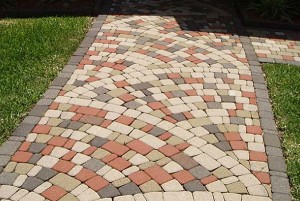 Interlocking pavers are an interesting way to add classic look to your patios and walkways, or any other appropriate paving. They have been used at homes and in streets for centuries, and can create a lovely European-style setting. The style works with various stones, bricks, more modern tiles, and more. They are lasting and more interesting than standard concrete paving. Prior selecting and installing pavers, it’s important to be aware of some things that may help you decide whether pavers are best for your project goals, and avoid potential problems if you choose them. Uneven or unstable ground may cause uneven pavers. Even if they seem even at first, over time you may find that pavers become uneven.
Interlocking pavers are an interesting way to add classic look to your patios and walkways, or any other appropriate paving. They have been used at homes and in streets for centuries, and can create a lovely European-style setting. The style works with various stones, bricks, more modern tiles, and more. They are lasting and more interesting than standard concrete paving. Prior selecting and installing pavers, it’s important to be aware of some things that may help you decide whether pavers are best for your project goals, and avoid potential problems if you choose them. Uneven or unstable ground may cause uneven pavers. Even if they seem even at first, over time you may find that pavers become uneven.
This usually happens because the base or soil is not even. Soft soils such as clay or sand may shift, contract, or expand depending upon water levels. These are difficult problems to clean up, so it’s important to take these things into consideration prior to choosing pavers. Edges of the path may sink or seem to disappear. This happens when the gravel or soil beneath the pavers’ edge washes away. This can be patched, but it can also be prevented with filter fabric. Also, if the border looks like it is falling away, that may be because the pattern was not held together well enough, or did not have edge restraints. Water puddles can appear after rain. This may not necessarily be a flaw; some materials, such as natural stone, have natural dips that mat gather water. However, some large puddles are caused by a dip beneath the pavers. Perhaps the soil was not compact enough in the beginning, or the base was not installed properly. The area can be lifted, more soil added if necessary, and the issue fixed. We offer an interesting variety of pavers and can create almost any pattern you want—from modern to Roman. We also know the ins and outs of installation, and how to prevent the problems. Call us and let’s start designing your new interlocking pavers.

Recent Comments